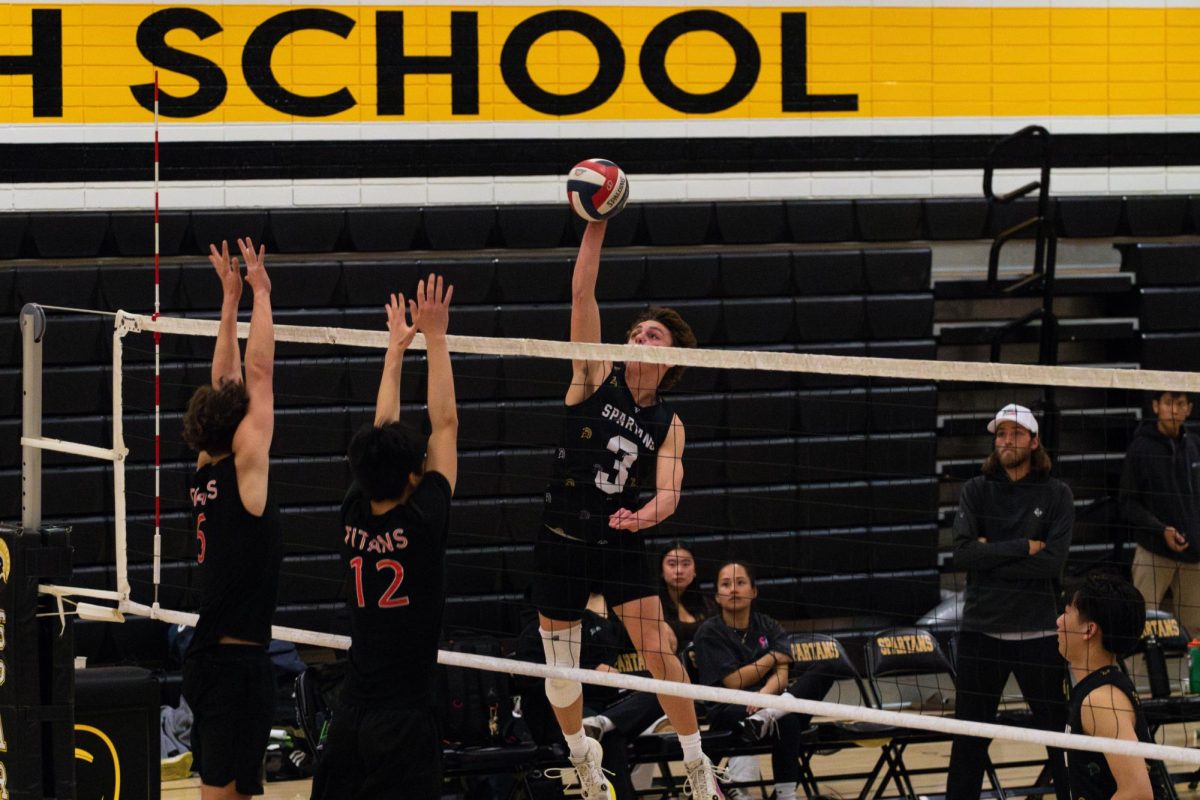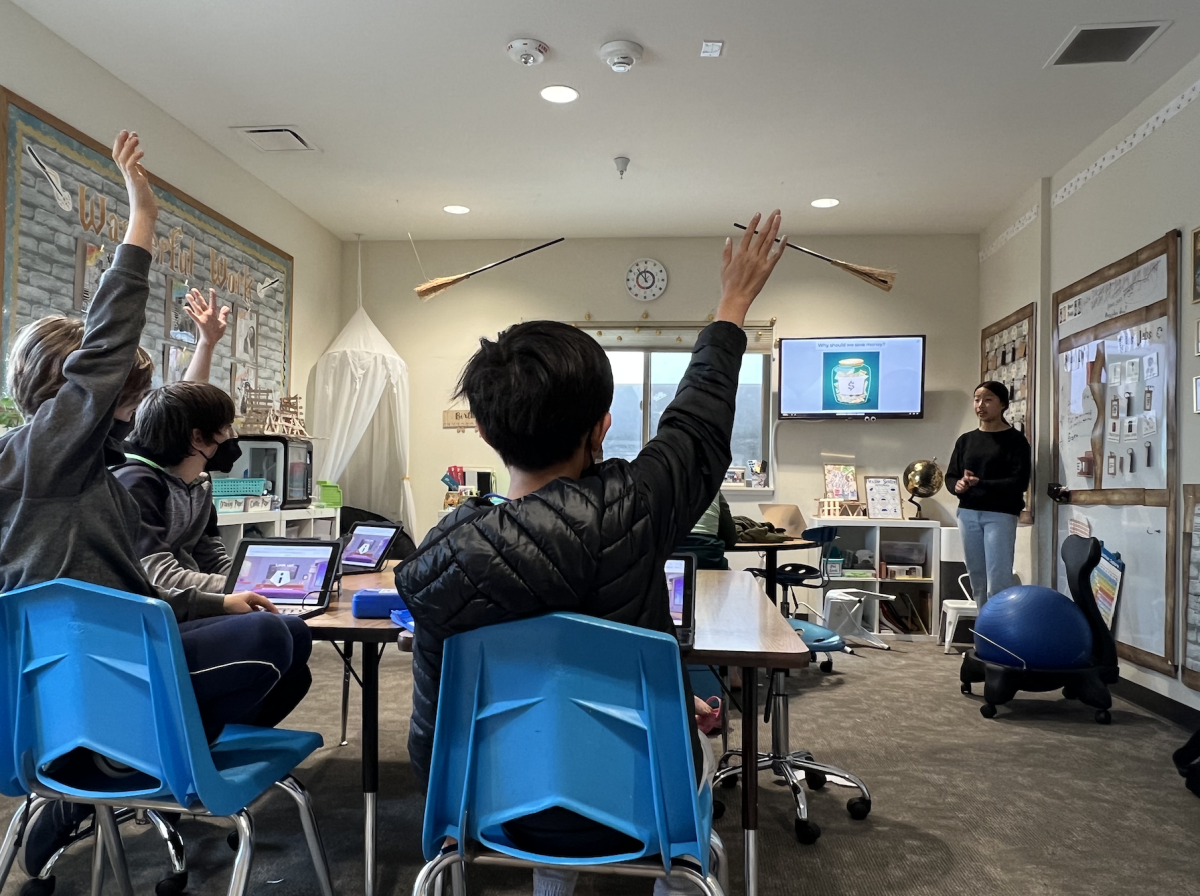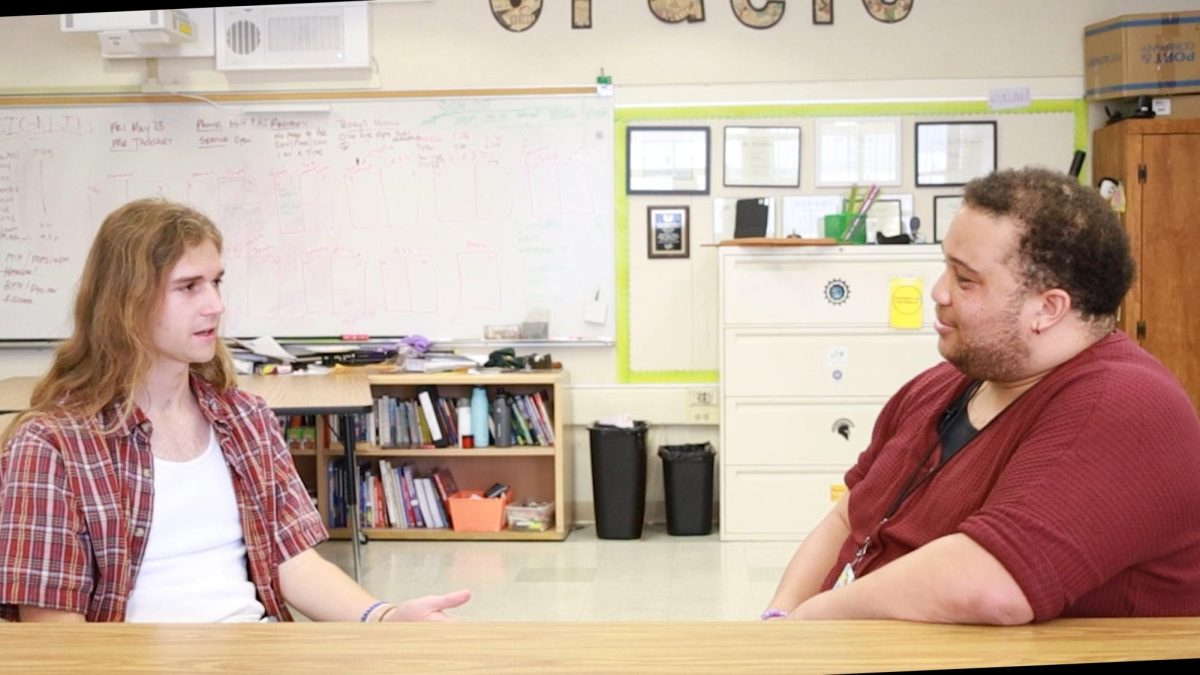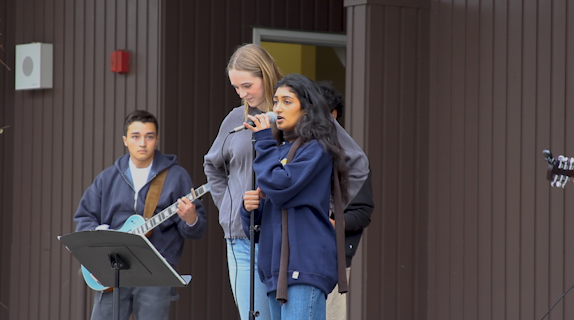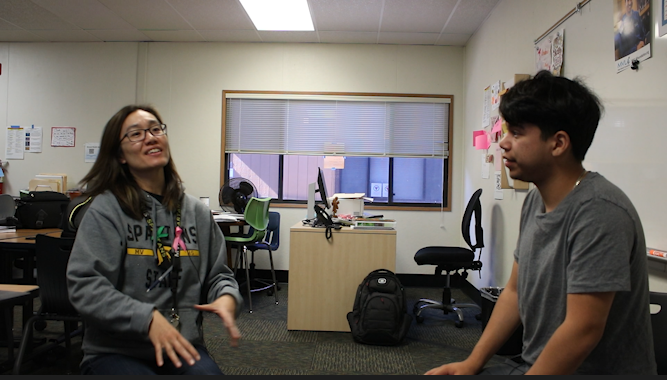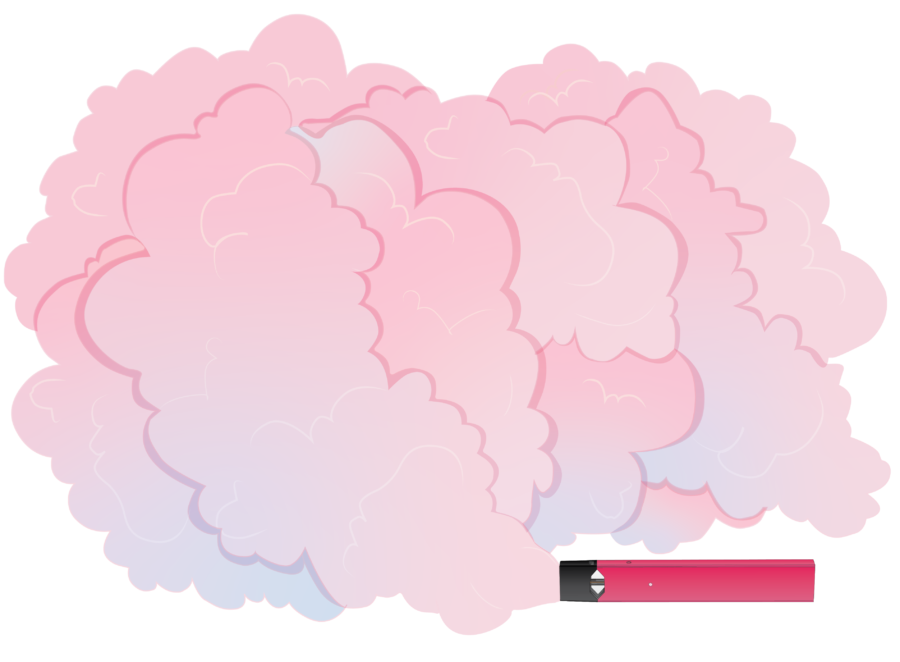Drug culture: students learn moderation through experience
Nov 28, 2020
This cycle, the Oracle investigated the school’s drug culture in order to capture the nuances surrounding the conversation and usage of illicit drugs and to identify the causes for student drug use. In order to accurately understand and portray the culture, all students were granted anonymity in order for them to speak frankly and truthfully about their observations, opinions, and personal experiences. Every student’s name has been changed in this article. All of the perspectives outlined in the article are of upperclassmen with various backgrounds and experiences in order to most fully capture the conversation from different angles.
While this article focuses mostly on student drug use, the majority of the survey respondents do not use any illicit substances, according to the 2019 Healthy Kids Survey data. In fact, illicit drug use has nationally gone down, as the New York Times has found that “today’s teenagers are getting tamer and more responsible” than older generations. This is partly because they smoke less, use fewer hard drugs, and drink less than their parents’ generation did.
In light of COVID-19, The Oracle found that with the exception of alcohol, drug use did not change substantially. According to several interviewees, while students drink alcohol significantly less as a result of social distancing and shelter-in-place orders, marijuana, nicotine, and hard drug use has stayed relatively the same. Causes of drug use include boredom, curiosity, subtle peer pressure in terms of conforming and fitting in, and self-medication.
Alcohol
Despite being adamantly opposed to drinking, senior Cole* threw a party because he felt left out by his friends.
“I know this is an immature thought, but I thought that no one would come if I didn’t have drinks,” Cole said. “So, we had tons of vodka.”
Despite throwing the party and providing alcohol, Cole himself did not drink; in fact, watching his friends only “furthered his avoidance” towards such substances. Cole said his moral opposition made him feel “like a Puritan” because he felt “unnecessarily upset” about something that was so normalized.
“I thought ‘why am I being so morally strict on this when no one else is?’” Cole said. “I know that there are more people who think like I do, but I just couldn’t find anybody.”
“I thought no one would come if I didn’t have drinks”
As a result of his environment, Cole began drinking to overcome his opposition to alcohol, which he said was successful and enjoyable.
“I had more fun with my friends because I just felt more comfortable. The feeling that you get – that was fun,” Cole said.
While 39% of juniors have used an illicit substance, according to the 2019 MVHS Healthy Kids Survey, Wellness Coordinator William Blair said students like Cole tend to perceive the number as significantly higher, especially for ‘softer’ drugs such as alcohol and marijuana. These drugs are typically seen and talked about as “normal.”

While students use illicit drugs out of curiosity and to have fun with friends, afterwards they are reflective about their decisions. Students tend to reflect on their experiences and the consequences of their actions, leading to moderation and meaningful decision making about the amount and frequency of the illicit substance consumed. This aligns with the New York Times’ findings that this generation is the “cautious generation.”
Senior John* said alcohol is “only really talked about when people need it for parties.” If students are unable to get alcohol through someone older or a fake ID, John said they often steal. After reflecting on his actions, however, John said he decided to stop.
“I used to [steal alcohol] because it made me feel cool. I felt like I was the reason why everybody was super excited because whenever I’d show up, everybody got super hyped,” John said. “But I realized that feeling good for that reason is not very pleasant.”
John said his friends used to text him and ask him to bring alcohol, and then he would go with a friend to steal bottles and bring them to the party. Sometimes people would offer to pay him, but he always did it for free “because that [didn’t] feel like the right kind of business.”
Senior Jane* said that the typical student who drinks alcohol tends to reserve it for the weekends or a special occasion with the purpose of getting drunk rather than enjoying the beverage itself. She said she personally limits her consumption as she believes alcohol is like “poison,” so she mostly drinks in social situations such as drinking games.
“Kids are drinking because they want to feel messed up, they want to feel intoxicated,” Jane said.
When people do drink, getting back is often difficult – while students understand drunk driving is wrong, they oftentimes try to justify their behavior because it is the most convenient option, such as senior Hannah*.
“We just drink at the beach and then go home after we aren’t drunk anymore, or at least once one of us can drive,” Hannah said.
While students mostly try to avoid drunk driving through designated drivers or parent pick-ups, they “won’t go too much out of their way to remain safe,” according to Cole.
Cole added that he’s noticed his friends “really look forward to” consuming alcohol and drugs in general, and compares their excitement to his experiences looking forward to Friday night sleepovers as a child.
Whereas alcohol is largely normalized in social settings, drinking alone is uncommon and generally frowned upon, according to Jane. Even within the group of people who drink “hard and pretty constantly,” she said drinking alone is considered “not chill.”
Marijuana
Junior Olivia* believes marijuana is the most commonly used drug by students, more so than alcohol. Known for being a “gateway drug,” marijuana is often the first drug students try before getting into other substances. Olivia is an example of this; she said she used marijuana for the first time in the beginning of her freshman year.
“I wanted to try it, so I just did it,” Olivia said.
Similar to Olivia, Hannah also was introduced to drugs through marijuana and said “there wasn’t really any logic behind” taking her first hit. This casual attitude towards marijuana is common within the community, contributing to the prevalence of drug use among students.
Blair said the “why not” marijuana culture, where students don’t see any downsides to consuming the drug, stems from the lack of research as well as the legalization of marijuana in California.
“I realized that feeling good for that reason was not pleasant”
“There hasn’t been enough research on the effects of mariijuana. A lot of information out there is contradictory or funded by sources that profit from the legalization of marijuana,” Blair said. He added that while many students believe the drug is harmless, marijuana use is associated with loss of IQ when consumed more than three times a week.
“If you don’t know at least one person with a nic device, you’ll know at least two people who’ve tried it”
Cole said the perceived lack of risk as well as the normalization of marijuana can sometimes be dangerous, and he knows students who have ingested weed because they were with their friends and “wanted to seem cool.”
Blair said the negative effects of marijuana “far outweigh” any of the positives that he often hears students cite.
Cole agreed with Blair. Though he personally views marijuana as a “serious drug” and has never tried it, he said many of his friends see it as relatively harmless.
“That whole ‘why not’ concept is right, because I’ve heard that there’s little-to-no health risks, that you won’t completely mess up any major organs,” Cole said. “Drinking is worse – you lose brain cells, you damage your liver, you do reckless things. When you get high, people are more calm, more collected, and they seem overall pretty healthy. I’ve seen people get high before working out or exercising, but you can’t do that with alcohol. I see it as a ‘why not’ thing too.”
Senior Jessica* said she also smokes marijuana before similarly routine activities. Her consumption has not changed during quarantine – she said she still smokes an average of five times a day, as marijuana is a “normal part of [her] daily routine.”
“If I smoke before a test, sometimes it’s helpful, but sometimes I don’t remember anything, Jessica said.
She said she funds her marijuana usage through dealing. While she only buys marijuana for herself and rarely posts it on social media, Jessica said people will often text her and ask if she has any.
“If I didn’t [deal], I wouldn’t have enough money to smoke the amount of weed that I smoke right now,” Jessica said.
She added that while she has noticed a loss of cognitive function, including a worsening memory and vocabulary, she doesn’t regret it.
“I don’t even know if you can get addicted to weed. It’s just become a normal part of my daily routine, more of a habit than an addiction. I feel like I’m just happier if I smoke.”
Other students, such as Jane, use marijuana as a means of self-medication.
“It serves this very essential, simple purpose to me. It calms me down and it makes me uber productive, uber motivated, in a way less mentally stringent way,” Jane said. “Having weed as an outlet was a really healthy thing.”
Nicotine
Unlike marijuana, which students often self-medicate and view as relatively harmless, nicotine is widely understood to be unhealthy.
Hannah, a regular nicotine user, said “nicotine has a worse reputation than weed” due to its addictive properties and health concerns.
However, with student dealers and affordable prices, nicotine is easily accessible, increasing its popularity within the student body. According to Hannah, Puff Bars, disposable vape devices, are around $12, with other nicotine devices priced around $15 to $20.
“If I failed a math test, I’d go to the bathroom and cry to my friend, and use”
“If you don’t know at least one person who has a nic device, you’ll know at least two people who’ve tried it,” Hannah said.
Senior Ava* said she has used nicotine on and off throughout high school. She said she knows many people who always have at least one Puff Bar on them at all times and can’t go more than eight hours without “getting a puff.” She cited easy accessibility as a major reason for widespread nicotine usage; she said it is easier to get nicotine compared to harder drugs like cocaine.
Hannah said she has been addicted to nicotine since March 2020.
“As gross as it is to use nic, it’s kind of cute to have a little tiny [device],” Hannah said.
Hannah said she has a Juul but hasn’t used it in over a year. She more commonly buys disposable devices like Puff Bars, and estimates spending a total of around $250 on nicotine.
“It’s kind of crazy the money people blow on nic devices, especially at our school,” Hannah said.
Hannah added that nicotine is commonplace in some social situations and is an effective icebreaker.
“It’s kind of universal. If I’m hanging out with other people that I don’t know, I’ll sometimes ask ‘do you want to hit this?’ and they’ll say yeah,” Hannah said.
However, it depends on the situation. Hannah said she only brings up drugs if she knows it’s a common ground because “it tends to make people uncomfortable.”
“I don’t want to come off as a stoner, and I don’t want to have a bad reputation because there are lots of people at school who will judge you,” Hannah said.
Hannah describes a nicotine high as a 20-second head rush that doesn’t leave you high for three hours like weed.
“It’s fun because it doesn’t have the commitment of getting high. There’s just something about it,” Hannah said.
John, who has tried nicotine in the past, said he didn’t like nicotine because of the short head rush and negative health effects.
“It’s not a long lasting feeling, so it’s not worth it,” John said.
Cole, who has never used nicotine, said he has seen many warnings about how unhealthy it is, yet he still sees people doing it regularly.
“It’s difficult to use nicotine in a healthy way. They know it’s addictive and they still do it,” Cole said.
He added that nicotine is very normalized at MVHS as a result of its highly addictive properties, and that is where the “desperation” stigma around drugs arises.
“When you think you need it, that’s when it becomes really bad,” Cole said. “They [addicted students] don’t talk about nicotine as being a cool drug. They talk about it as if it’s a regular thing.”
“When people are younger, they’ll talk about smoking or doing drugs in class because it’s cool, but as you get older, you just kind of avoid it”
According to the American Addiction Center, nicotine is one of the most addictive drugs. It says that the scale of addiction differs between people, and depends on physical and psychological aspects.
Jessica, who said she vaped around two packs of Juul pods a week her freshman year, said she found it “really easy to give up” when she decided to stop using.
However, many other users find it significantly more difficult to quit. John spoke on his observations of nicotine users.
“Usually when people like nicotine, it’s because they’re addicted and can’t stop,” John said.
You can’t get the same answers with the harder drugs as you can with weed and alcohol”
Hannah, who is currently addicted despite trying to stop for several months, said it is difficult to stop using. She said she is trying to quit because being dependent on nicotine is annoying, and even minor inconveniences will prompt her to get a nicotine device.
“If I failed a math test, I’d go to the bathroom and cry to my friend and use [my device]. It takes your mind off of stuff,” Hannah said.
While Hannah admitted nicotine is bad for her health, she said the biggest reason she wants to quit is because of her dependency on the drug.
“There’s a point where you go and buy [a nicotine device] and instead of being fun it’s just getting another one,” Hannah said.
John said while he knows many students who use nicotine, he doesn’t see a lot of people really pushing others to vape, for example goading them on with, “hit it, hit it, hit it!” He said in his experience, people will offer a vape once or twice, but if they are assured you don’t want to do it, they will leave you alone.
On the other hand, junior Max* said he thinks there is peer pressure to do nicotine among other drugs, especially in bigger groups, as friends will say, “You’re not one of us. You can’t be one of us unless you do this.”
Hannah said the two biggest reasons a student would start doing nicotine and other drugs are curiosity and looking cool. She thinks underclassmen care more about vaping to look cool, because they are coming out of middle school and are entering an environment where drugs are more prevalent. According to Hannah, a lot of underclassmen start doing drugs “so they can seem cool, at least to themselves, if not others.”
“When people are younger they’ll talk about smoking or doing drugs in class because it’s cool, but as you get older, you just kind of avoid it,” Hannah said.
Hard Drugs
Ava’s first time on Xanax, she blacked out for two full days.
“I had zero recollection of what had happened,” Ava said, “I was literally missing this chunk of my life, and the idea that some people at our school have access to that type of Xanax 24/7 scares me.”
Two years ago, Xanax was circulating heavily throughout the school and some students have had experiences similar to Ava’s. One of Ava’s friends was injured while on Xanax, another student ended up in the hospital.
Safety is a concern for some students who do harder drugs such as hallucinogens and opiates.
“It’s a lot scarier to try because you don’t have the same security of knowing this is safe,” Ava said. “You can’t get the same answers with the harder drugs as you can with weed and alcohol, so there’s always that level of fear when it comes to the harder drugs in terms of safety.”
Jane said that some of her friends who have been starting to use MDMA, otherwise known as ‘molly,’ don’t always have trustworthy sources. However, she said the people she has talked to aren’t worried about the quality of their drugs.
“I tried talking to [my friends] about [safety]… but they just say ‘We’re teenagers, we can handle it, we’ve done other drugs’,” Jane said. “I think they talk like that because the reality of something like [unsafe drugs] is a little too scary to palate.”
Both Ava and Jane believe that concerns with the quality of hard drugs and the fact that they are harder to obtain is the reason why many students, including ones who smoke weed and nicotine, and drink alcohol, are against taking hard drugs.
Wellness Coordinator Blair said that although he has seen far fewer cases of hard drug use, those he has seen have been more severe – closer to the realm of addiction rather than experimentation. Cole also said that even though his friends consume drugs such as marijuana and alcohol, hard drug use is pretty rare and mostly only joked about.
According to Jane, who has tried various hard drugs including cocaine and acid, “it was 100% a product of me being just utterly curious.”
Jane said peer pressure was not a factor in her decision to try harder drugs, and when she has been given the opportunity to do other drugs, including nicotine, heroin, and meth by some friends, she refused.
“No one besides my doctor could have ever convinced me to go in that direction,” Jane said.
Ava echoed this sentiment, and said she has never been pressured into doing anything she was uncomfortable with.
Jane said she only does hard drugs occasionally, and only to “enhance an experience” such as a concert, music festival, or rave.
Similarly to Jane, Jessica said she has tried various drugs including “acid, shrooms, DMT, and molly”, also citing curiosity as a main factor for her experimentation.
“It was just an experience I wanted to try,” Jessica said. “There’s no way to explain that feeling and understand it besides trying it.”
Jessica has noticed that people who do hard drugs consistently tend to have “mental problems” or unhappy home lives. She said she thinks consistent drug users use it as a coping mechanism.
“People who don’t do [drugs] as much don’t feel the need to not be present, not be aware all the time, and to not get away from everything,” Jessica said.
“I can see why many people think ‘I need to do Adderall to do well'”
The main causes of all illicit substance usage are curiosity, boredom, self-medication for personal mental health and family problems, and subtle peer pressure in the form of students wanting to fit in. Another motive for doing hard drugs, especially Adderall, is to perform better in school.
Ava said she has taken Adderall before all of her finals and plans to continue doing that in an attempt to improve her grades, specifically striving for straight As. She said this is a common occurrence at school, as she often feels that “everyone has a 4.0” among other achievements.
“Especially in the Bay Area… there is so much pressure,” Ava said. “I can see why many people think ‘I need to do Adderall to do well’.”
*The Oracle does not condone or promote any illicit drug use. This article does not reflect The Oracle staff’s opinions. All students’ names have been changed to maintain their anonymity due to the sensitive nature of the subject.










